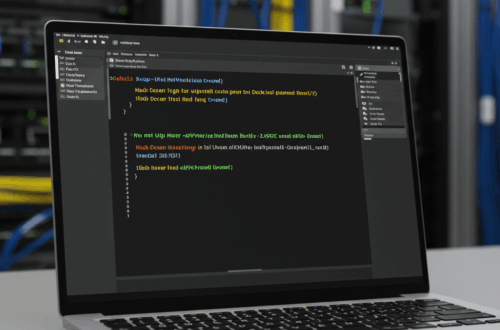IaC Confessions: Navigating the Minefield of Infrastructure as Code
Building and managing infrastructure is hard. Infrastructure as Code (IaC) promised to make it easier, and in many ways, it has. But like any powerful tool, IaC can be a double-edged sword. One wrong move and you could be staring down the barrel of a production outage. This post explores the common pitfalls of popular IaC tools and offers advice on navigating these tricky waters.
The Promise and Peril of IaC
IaC offers significant advantages over traditional, manual infrastructure management. It allows for repeatable, predictable deployments, reduces human error, and enables version control for your infrastructure. But this power comes with responsibility. Understanding the strengths and weaknesses of different IaC tools is crucial for long-term success.
Terraform: Power and Pitfalls
Terraform, with its declarative approach and widespread provider support, has become an IaC heavyweight. Its ability to manage complex, multi-cloud environments is a huge draw. However, the state file, especially when managed remotely, can become a source of frustration and even outages if not handled carefully. Best practices like locking and proper backend configuration are essential to avoid conflicts and data loss. So, while powerful, Terraform requires discipline and a solid understanding of its inner workings.
Pulumi: The Appeal of Familiar Code
Pulumi offers a different approach, allowing you to use familiar programming languages like Python, JavaScript, and Go. This can be a boon for developers already comfortable with these languages, reducing the learning curve. But relying on SDKs can introduce unexpected issues. Changes in the underlying SDK can break your code, potentially leading to deployment failures. While the flexibility of using general-purpose languages is attractive, keeping your dependencies updated and thoroughly testing your code is paramount.
Ansible: Simplicity and Scalability Challenges
Ansible, known for its agentless architecture and simplicity, excels at configuration management. It’s a great tool for tasks like patching servers and deploying applications. But Ansible’s playbook-based approach can become unwieldy as complexity grows. Deeply nested playbooks can become difficult to debug and maintain. Consider using roles and modules effectively to keep your Ansible code organized and manageable.
CloudFormation: The AWS Native Option
CloudFormation, AWS’s native IaC service, offers tight integration with other AWS services. But its JSON or YAML-based syntax can be verbose and challenging to work with, especially for complex deployments. While CloudFormation simplifies management within the AWS ecosystem, its limitations often push users towards other, more flexible tools.
Choosing the Right Tool for the Job
There’s no one-size-fits-all solution in the IaC world. The best tool depends on your specific needs, team expertise, and the complexity of your infrastructure. Consider factors like your cloud environment, the size of your team, and the level of control you need. Start with a small project to evaluate different tools before committing to a long-term solution.
Tips for IaC Success
- Start Small and Iterate: Begin with a pilot project to test your chosen IaC tool. This will give you valuable experience and help identify any potential issues early on.
- Version Control Everything: Treat your IaC code like any other software project. Use a version control system like Git to track changes, collaborate effectively, and roll back if needed.
- Automate Testing: Implement automated testing to catch errors before they reach production. Tools like Terratest can help ensure your infrastructure is configured correctly.
- Modularize Your Code: Break down your IaC into reusable modules. This improves code readability, maintainability, and reduces duplication.
- Embrace Continuous Integration/Continuous Delivery (CI/CD): Integrate your IaC into your CI/CD pipeline to automate deployments and ensure consistent infrastructure across environments.
The Future of IaC
The IaC landscape continues to evolve rapidly. New tools and approaches are constantly emerging. Staying informed about the latest trends and best practices is crucial for maximizing the benefits of IaC.
Choosing the right IaC tool can significantly impact your team’s productivity and the reliability of your infrastructure. By carefully considering your needs and investing in proper training and processes, you can harness the power of IaC to build and manage robust, scalable infrastructure.






